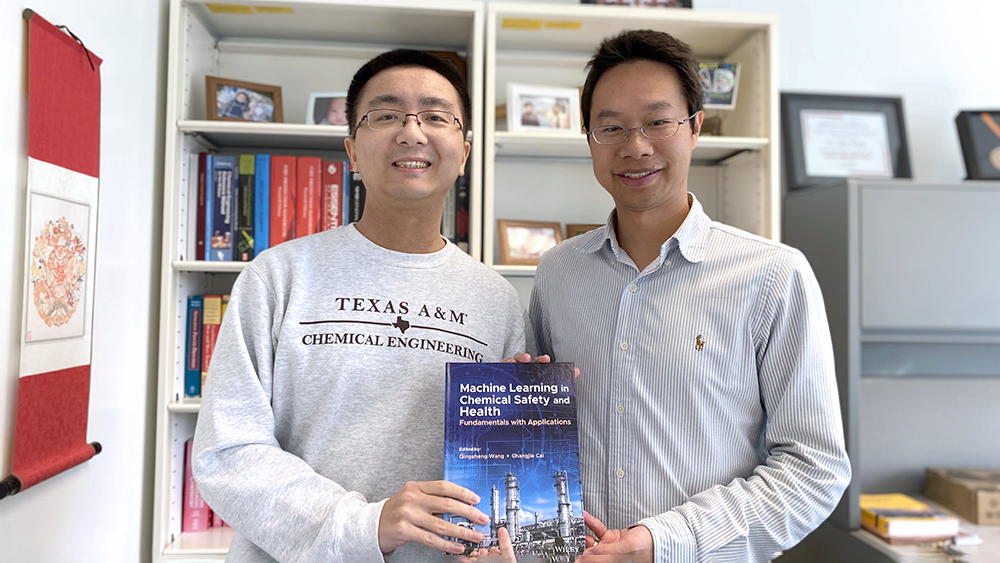
With the growing interest in the application of machine-learning algorithms in chemical safety and health-related model development, Texas A&M University researchers have written a new book, "Machine Learning in Chemical Safety and Health: Fundamentals with Applications."
The book is written by Dr. Qingsheng Wang, doctoral student Pingfan Hu and former doctoral student Dr. Zeren Jiao based on their research on process safety.
Wang, an associate professor in the Artie McFerrin Department of Chemical Engineering and George Armistead ‘23 faculty fellow, wanted to fill a gap he felt existed with no book available on the applications of machine learning in chemical safety and health.
“Our research in process safety can prevent accidents that can result in loss of life and serious injuries, hence protecting workers and communities from harm,” Wang said. “This book specifically focuses on the emerging technology of machine learning and artificial intelligence (AI) and how it can be applied to these areas.”
Hu’s research influenced his section of the book that focuses on integrating simulation and deep learning in health and safety. This includes machine learning and deep-learning applications in medical image analysis.
“This research will provide physicians with a computationally efficient algorithm and diagnose deficiency by proposing an innovative, noninvasive diagnostic method to assist the detection of obstruction locations in the peripheral lung,” Hu said.
Jiao's research and contribution to the book included the new methodology for using machine-learning algorithms to establish a fast and accurate gas dispersion model.
“This methodology is important, as well as how to use it and how it can be improved further,” he said. “Machine learning has been a hot topic in the past few years, and the hype continues to the recent public focus on ChatGPT, which is another proof of AI and machine learning's promising future.”
Overall, the research behind this book involves utilizing various tools to prevent and mitigate hazardous phenomena, such as toxic releases, fires and explosions.
“My research contributes to a safer, more reliable and more sustainable industrial process, which benefits the general public,” Wang said. “Our research can also protect the environment by reducing the risk of spills, releases and other incidents that can cause environmental damage.”